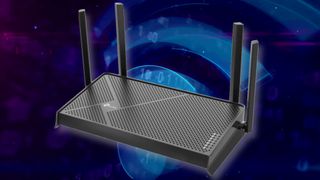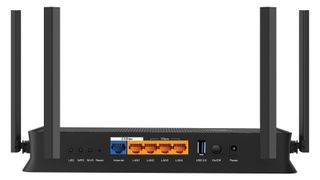TP-Link and Walmart tout first sub-$100 Wi-Fi 7 router, but it lacks speedy 6 GHz band
While not as speedy as other Wi-Fi 7 routers, it may be just what the home network administrator ordered

Wi-Fi 7 is still a new technology that is not yet supported by many client devices. Wi-Fi 7 routers are also still uncommon and relatively expensive. However, if you're willing to make some critical compromises, TP-Link and Walmart have teamed up to deliver the first Wi-Fi 7 router priced under $100.
The new TP-Link Archer BE3600 is available exclusively through Walmart for $99. For comparison, TP-Link's other Wi-Fi 7 routers start at $249, and some cost $599 or more. But there are even pricier offerings out there, such as the Asus ROG Rapture GT-BE98 Pro with an MSRP of $799 and the Amazon Eero Max 7 mesh router, which can cost as much as $1,699 for a three-node system.
So, the $99 price of the Archer BE3600 is appealing in the face of pricier competition, but it comes with a few compromises. First of all, it's only a dual-band router, not a tri-band model. Your devices can connect on the 2.4 GHz or 5 GHz bands but not the newer and speedier 6 GHz band. The missing 6 GHz band would provide higher performance, albeit at shorter distances. With the Archer BE3600, you can achieve speeds up to 2,882 Mbps on the 5 GHz band and 688 Mbps on the 2.4 GHz band, which is lower than other competing Wi-Fi 7 routers.
If the Archer BE3600 doesn't meet your needs, the more expensive Archer GE800 is a more premium tri-band Wi-Fi 7 router. However, you'll pay for that added performance, as the Archer GE800 costs $492.98 at Amazon (down from a list price of $599.99).

The Archer BE3600 has a few other limitations for wired connections. While TP-Link’s flagship Archer model includes two 10 Gbps Ethernet ports and four 2.5 Gbps ports, the budget model is more constrained. It only includes one 2.5 Gbps port for WAN, one 2.5 Gbps port for LAN, and three gigabit LAN ports. It also has a USB 3.0 port for external storage.
Support for Wi-Fi 7 is only beginning to take off. While third-party wireless adapters offer Wi-Fi 7, computers and mobile devices have just begun adopting the new technology. That being said, if you have somewhat modest needs and want to reap the benefits of Wi-Fi 7’s Multi-Link Operation (MLO) for reduced network congestion and improved latency and performance, along with 4K-QAM, the budget option at Walmart could be a good choice.
Stay On the Cutting Edge: Get the Tom's Hardware Newsletter
Get Tom's Hardware's best news and in-depth reviews, straight to your inbox.

Jeff Butts has been covering tech news for more than a decade, and his IT experience predates the internet. Yes, he remembers when 9600 baud was “fast.” He especially enjoys covering DIY and Maker topics, along with anything on the bleeding edge of technology.
-
bill001g This is as close as you can get to a scam without it really being one.Reply
The key and most important feature of wifi7 is the use of 320mhz radio band. That can only be used on 6ghz.
The router might support 160mhz radio bands on 5ghz but many end devices do not because of all the issue of avoiding restricted bands used by things like weather radar. So it is unlikely it will be able to really use this which means it is no better than wifi5. Again the 6ghz band is really needed for anything attempting to use more than 80mhz radio bands.
Next QAM1024 has issue unless you are close to the router. Although there is not much testing available I am going to bet qam4096 has even more issues. It likely does not work outside the room with the router.
The bonding of the 2.4 and 5g radio bands is not supported by many of the wifi7 devices on the market. It seems this is extremely sensitive to interference and it will pretty much overlap every neighbors around so you have many sources of interference.
They are targeting the customers who are lucky to know that wifi 7 has a bigger number than wifi 6. They have no clue about things like radio bands to know they are being taken advantage of. -
voyteck ReplyYour devices can connect on the 2.4 GHz or 5 GHz bands but not the newer and speedier 6 GHz band.
If so, can someone explain to me how I can...
reap the benefits of Wi-Fi 7’s Multi-Link Operation (MLO) for reduced network congestion
...without being able to connect to the less congested band?
Most Popular

